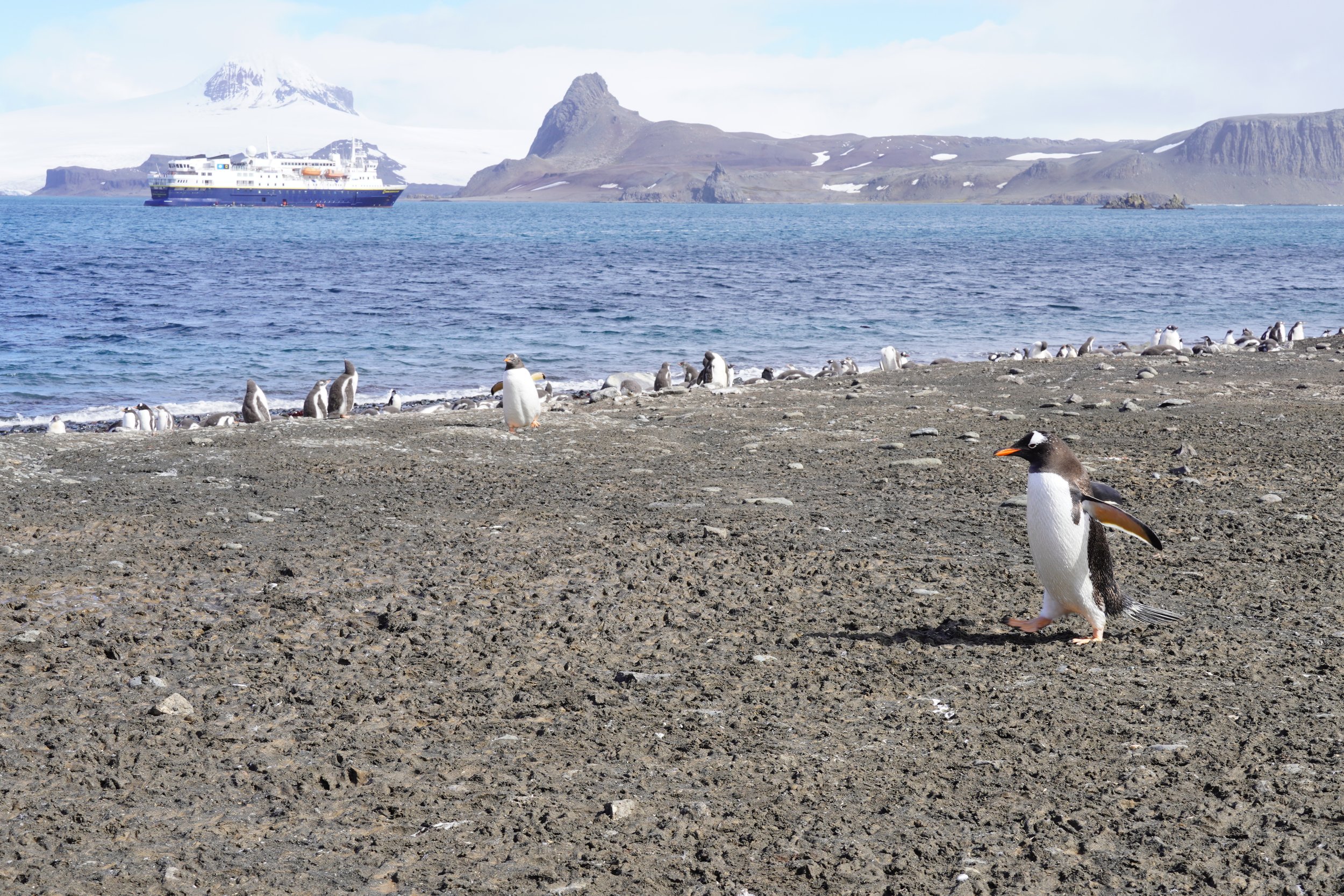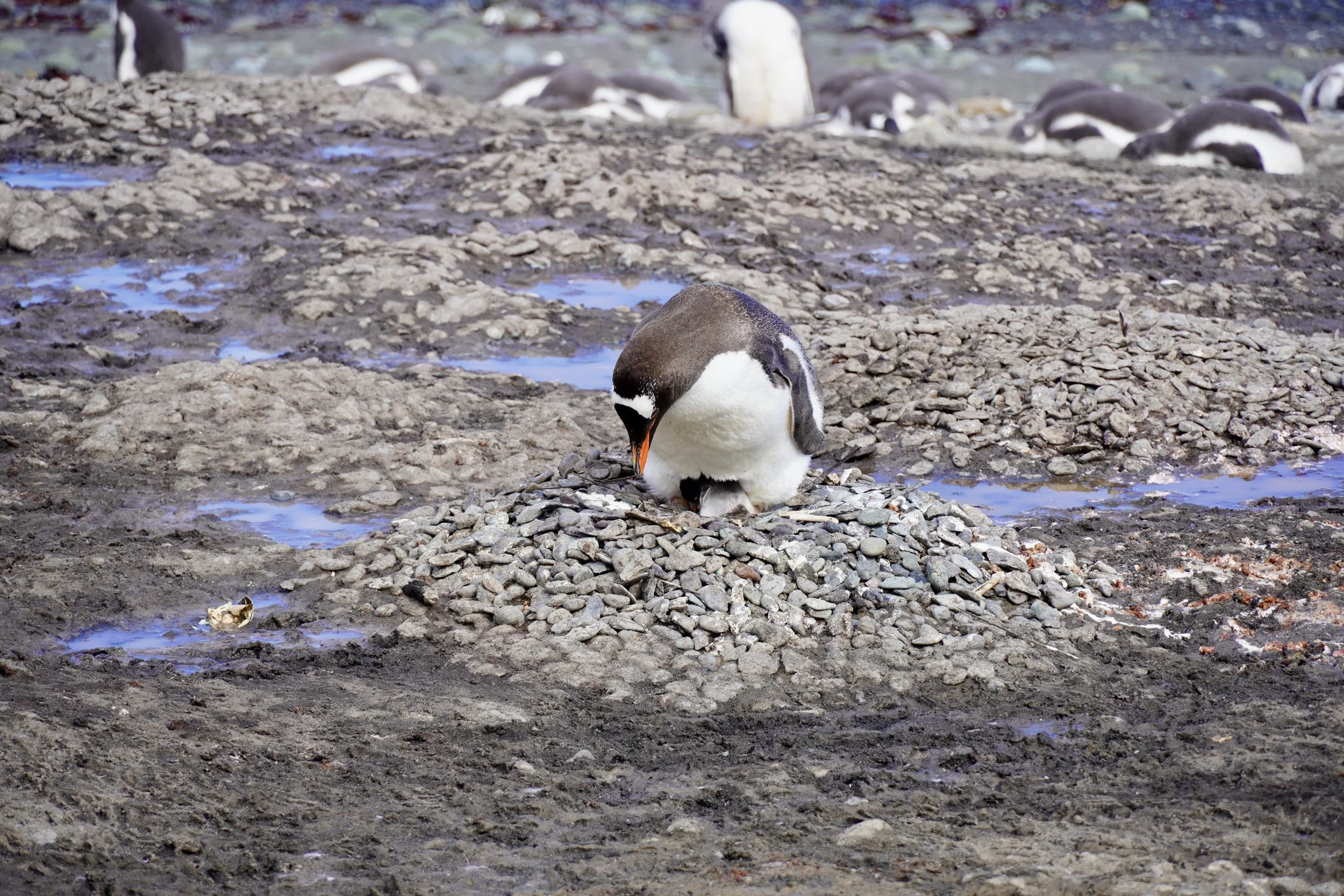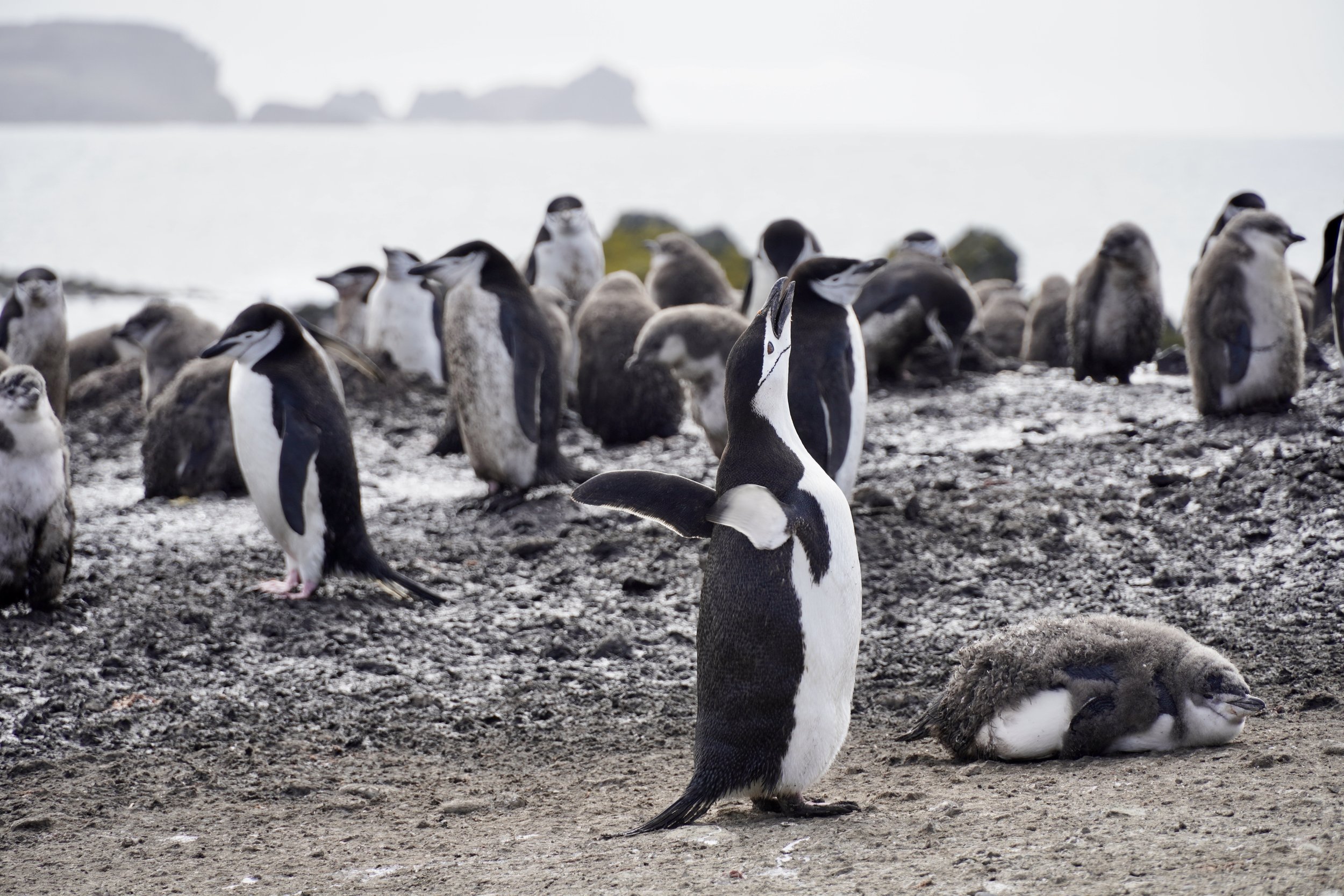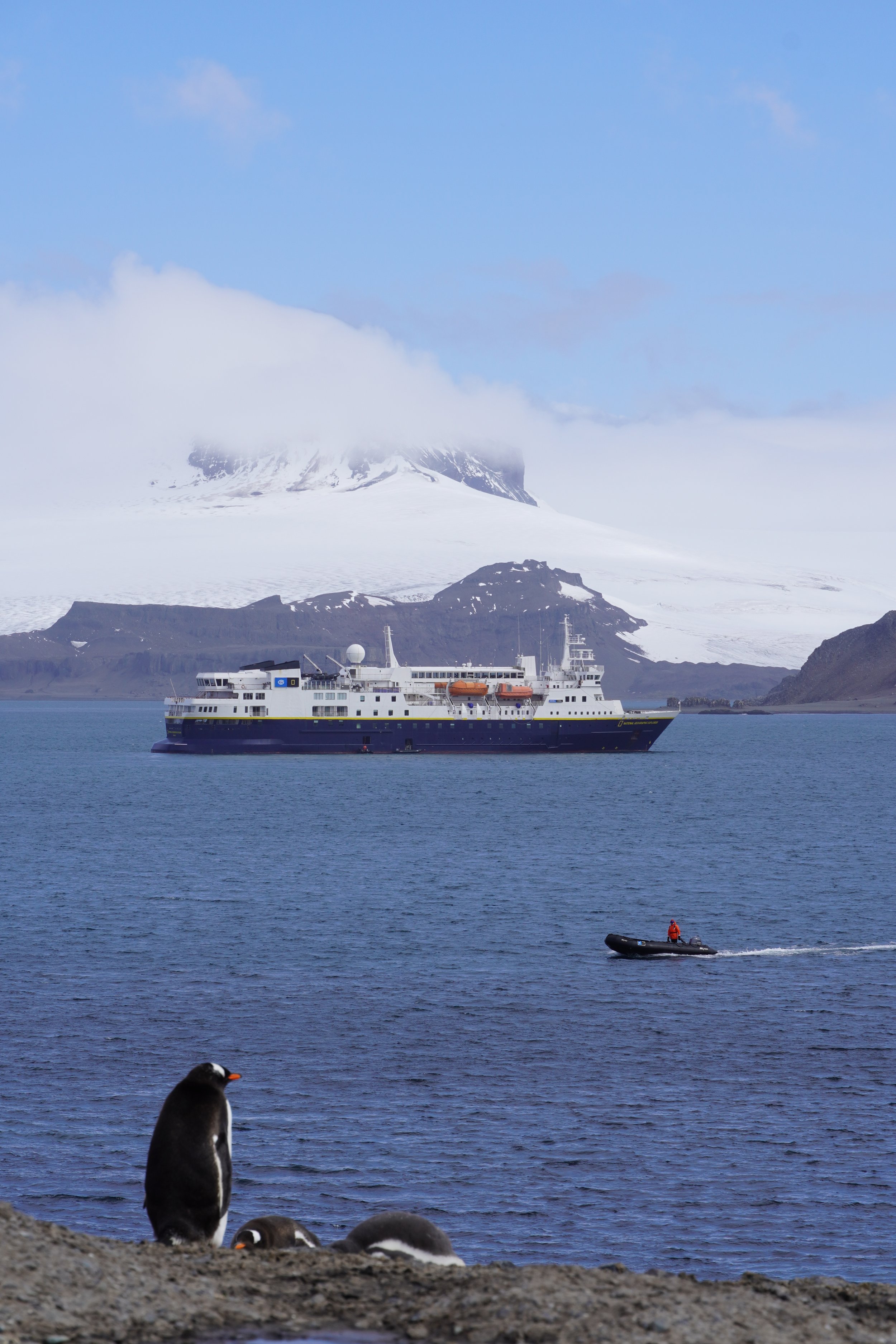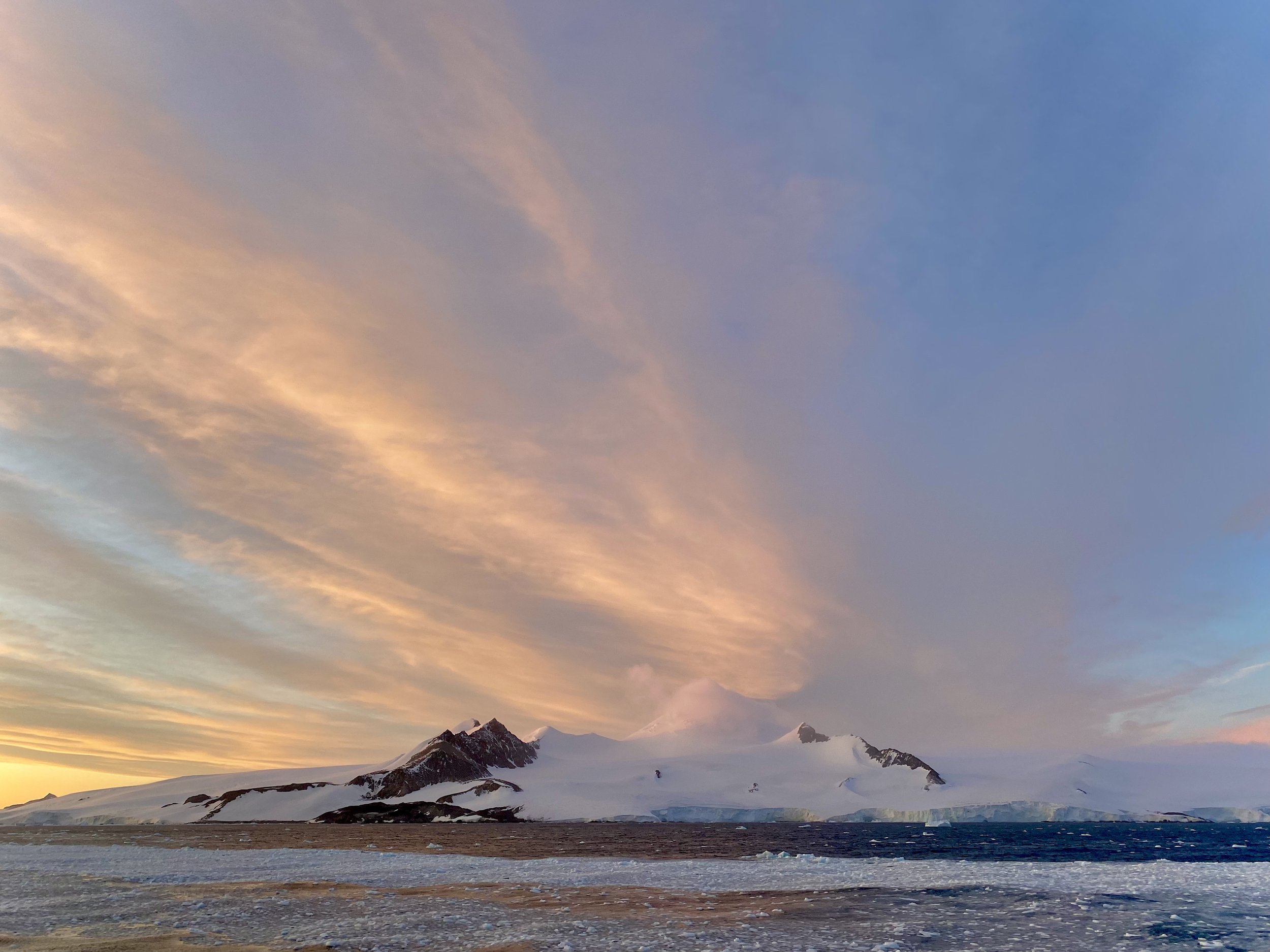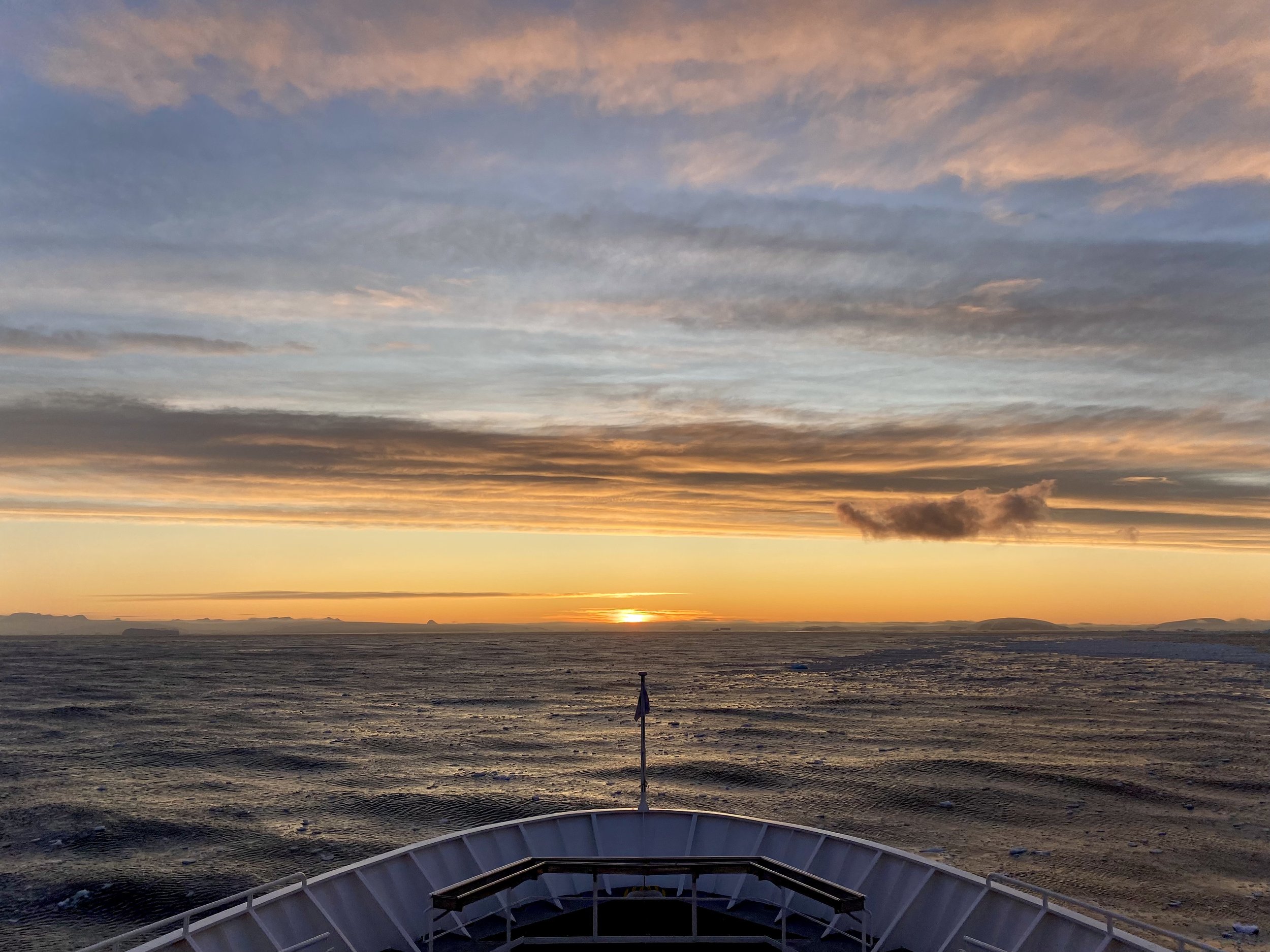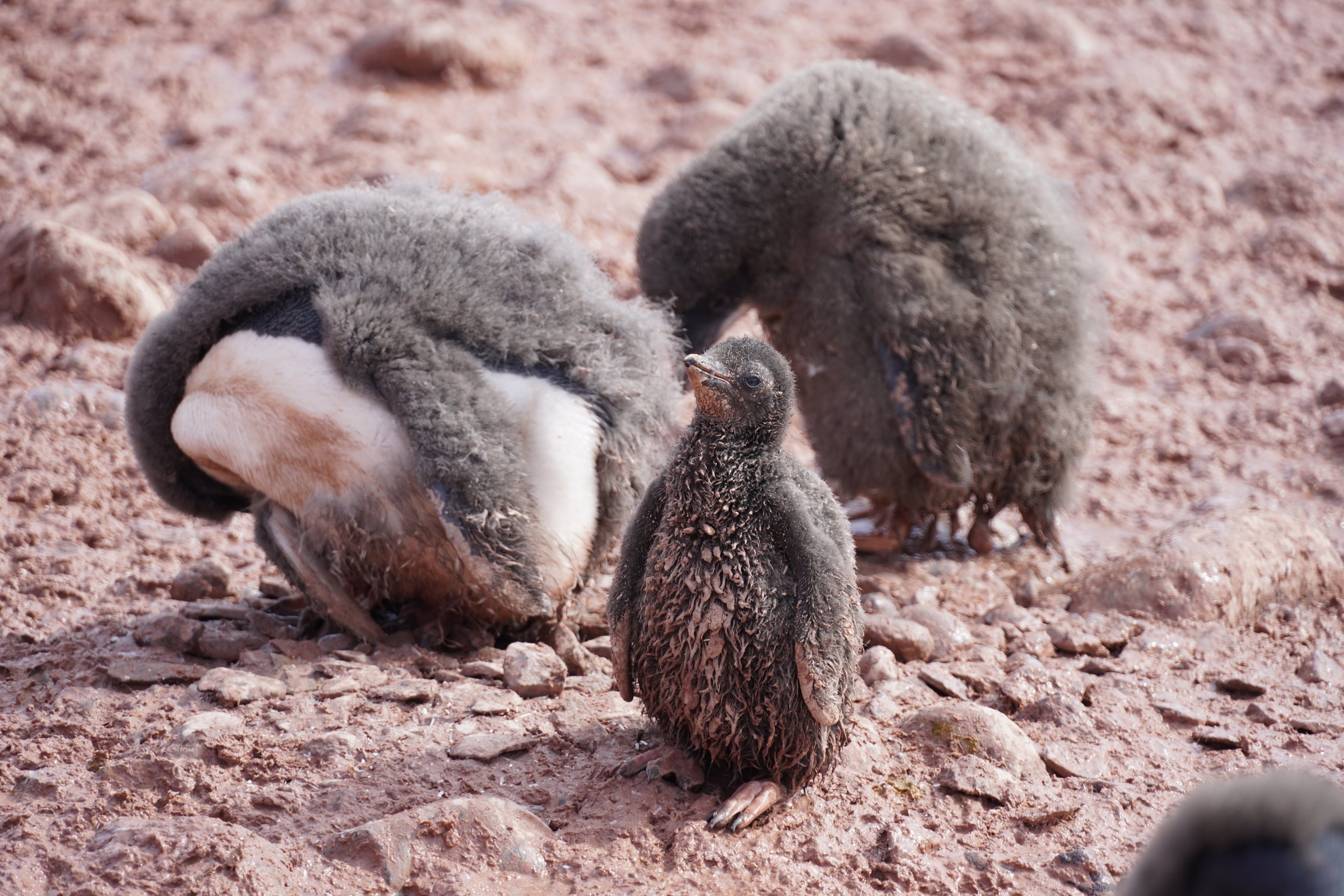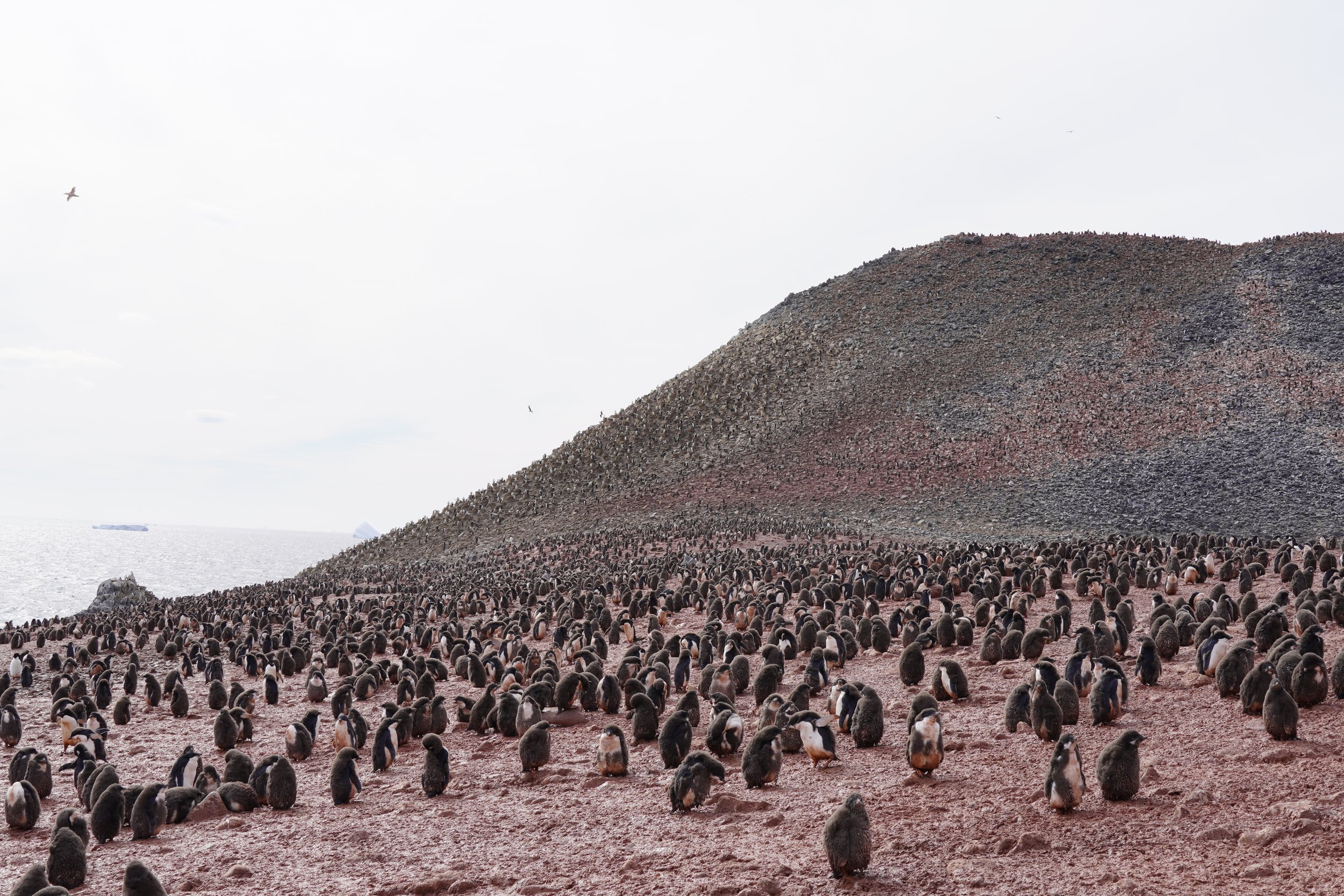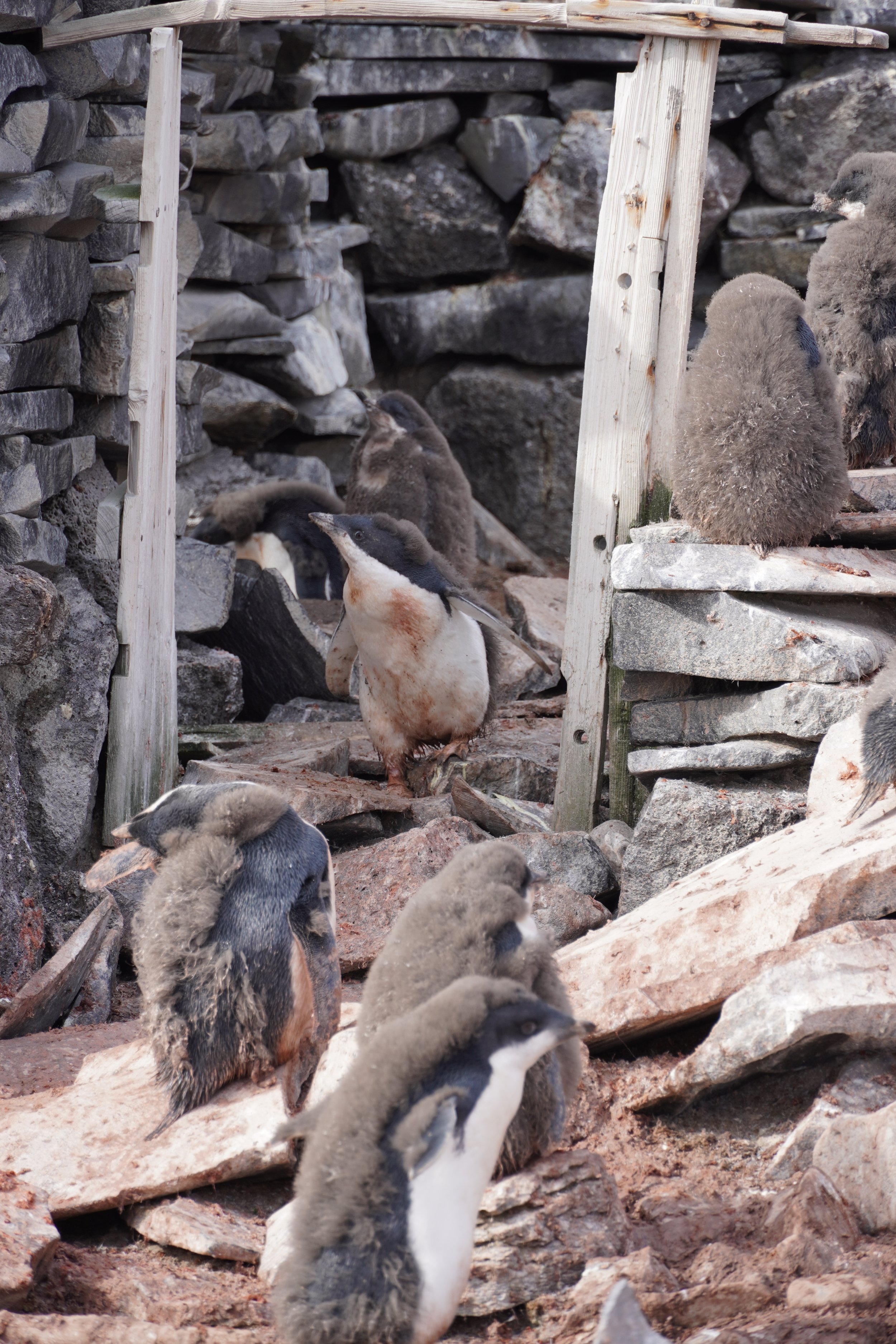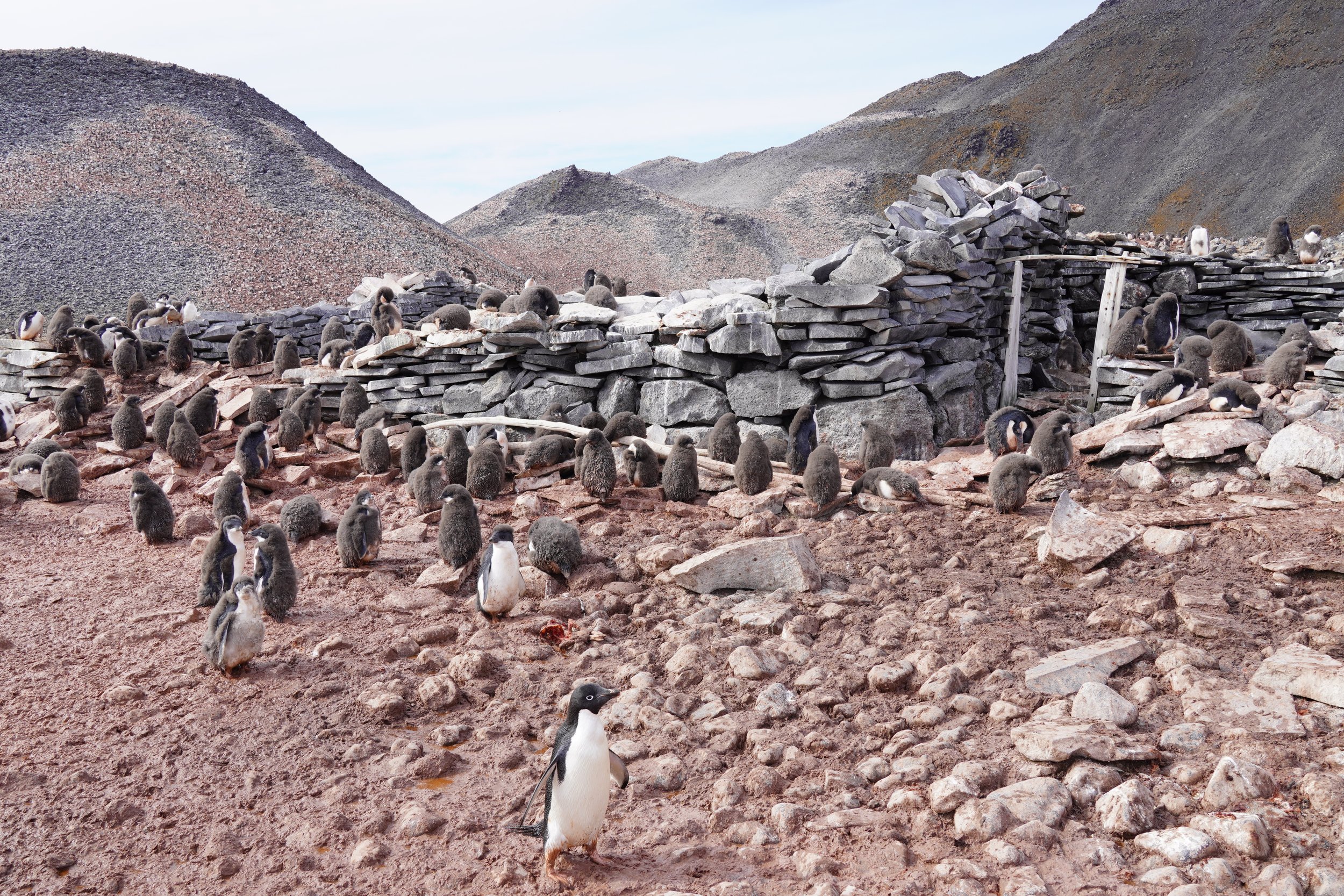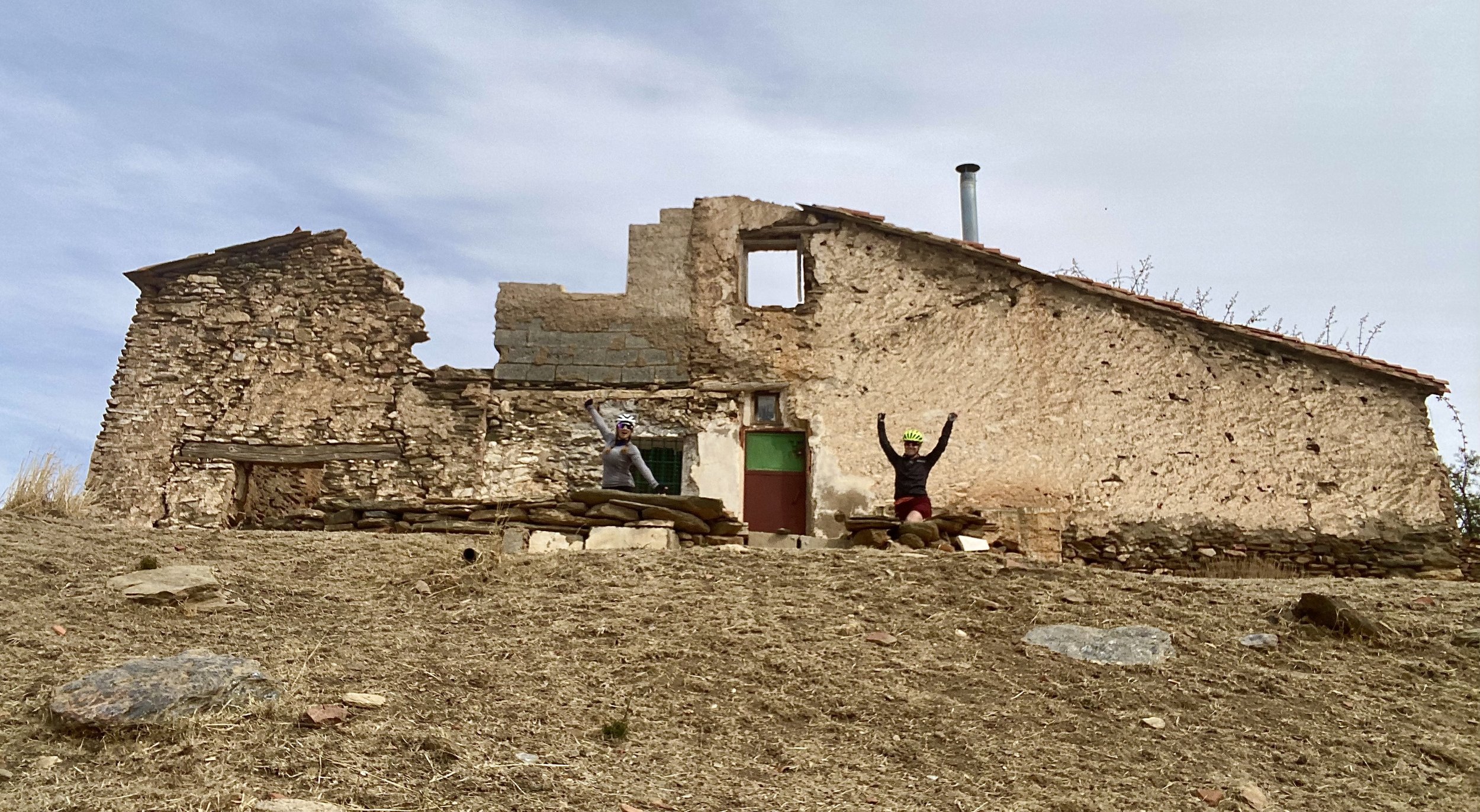Antarctica Part 2: Many, Many Penguins
Antarctica has an interesting geopolitical history. It is a distinct continent, but its governance is questionable at best. Seven countries currently have land claims in Antarctica - Argentina, Australia, Chile, France, New Zealand, Norway, and the United Kingdom. However, there is no consensus as to the locations of these borders, so 115-120% of Antarctica’s land mass is claimed, yet 15-20% of the land remains unclaimed. This is likely why pretty much every country beyond these seven does not recognize these somewhat arbitrary borders.
Welcome to Part 2 of this expedition recap. (If you missed Part 1, you can read it here).
In 1959, the Antarctic Treaty was signed by 12 countries, declaring Antarctica as ‘a natural reserve devoted to peace and science.’ Since then, the treaty has grown to represent an unprecedented global partnership of more than 50 countries. (You can actually download a PDF of the Antarctic Treaty and the Protocol on Environmental Protection of the Antarctic Treaty here if you are interested).
In 1991 IAATO was created - the International Association of Antarctic Tour Operators. Antarctica is one of the most perfectly preserved regions on the planet, and IAATO was established to keep it that way. IAATO currently upholds membership from over 100 tour companies that have resolved to operate private-sector travel in an environmentally responsible way. The rules are many, and rightfully so. You will hear about them as we go along.
In 2019-2020 (the last full season before COVID derailed the cruise industry for a few years), more than 55,000 passengers made Antarctica landings from 400 voyages, and IAATO is constantly revising and adding rules to make these landings as harmless as possible for the delicate ecosystem. This video was included in one of the early presentations given on the ship. It sets the ground rules with a gentle whip. Once ashore, the expedition team was polite but persistent with enforcing them.
IAATO rules control access to landing sites by allowing no more than one ship at a time per site, and no more than 100 guests on shore at once. If a ship has more than 500 guests, they cannot complete shore landings, but will enjoy the Antarctica scenery cruising by. There were 128 guests with us on the National Geographic Explorer, permitting us to make landings with a little bit of a zodiac shuffle (truly this was more like herding cats than an eloquent dance, but the staff did an impressive job of it). Finally that brings us back to the South Shetland Islands, and our first landing at Barrientos Island.
Antarctica Day 1
The ship finally stopped moving both vertically and horizontally, and all human life was starting to emerge from their cabin bathroom floors. We were briefed on our inaugural landing at Barrientos, which is populated by two species of penguins. The excitement aboard was palpable.
It’s hard to explain the thrill of stepping foot on Antarctica for the first time. It’s a place so difficult to inhabit and so environmentally delicate that no human will ever know it as their primary residence. We were surrounded by species so uniquely adapted to live in these arduous conditions that they would never exist in even the most desolate environments Will and I have personally encountered. It was teaming with raw natural beauty, exhilarating new sounds, and objectionable aromas (penguins are stinky, did you know that?).
I took this picture of Will, taking this picture.
Two species of penguin colonies inhabited this small Island.
Gentoo Penguins:
Easily identified by the white patch above their eyes, these penguins are the fastest swimmers of all penguins, able to reach speeds of 36km/h (most penguins swim at 6-11km/h).
Gentoo penguins have the most prominent tail of all the penguins, and it sways side to side as they walk.
During egg incubation and the first several months of a chick’s life, one of the parents will be continually sitting on the nest protecting its offspring. When the babies are young, it’s too dangerous for the parent penguin to leave the chick for even a second as the birds of prey circle close overhead. Because of this, penguins have developed an absurd but hilariously practical adaptation. In an effort to keep their nests sanitary without leaving their young unattended and vulnerable, they can projectile poop up to 1.38m! Consequently, the neighbouring nests within the colony are about that distance apart (nobody wants a face full of poo).
Rock choices for nest building is important business.
Chinstrap Penguins:
Readily identifiable by the prominent black band around their chin, chinstrap penguins can dive depths up to 70 meters.
Chinstraps tend to nest on higher, rockier and more challenging terrain than other penguin species.
You likely noticed one of the more surprising features of this landing was the lack of ice and snow. Possibly even more surprising was the presence of vegetation. Most of Antarctica is covered by permanent ice, leaving only 1% of its land capable of colonizing plants, this predominantly occurs on the most northerly islands of the Antarctic Peninsula, such as the Aitcho Islands where we are located now. Only two species of flowering plants are found anywhere in Antarctica, and the remainder of the 400 some species that make up Antarctica’s plant group is composed of mosses, liverworts, lichens and fungi. The green colouring you have see in these shots are mosses.
Whale jaw bone.
This was a particularly sticky landing site, though most of what you will perceive as mud in these pics is actually feces. This is why penguin colonies smell like a farm. They live much like pigs, wallowing in their own mess. An important part to this ecosystem, pictured here meandering through the filth is the Snowy Sheathbill, locally nicknamed ‘$#!T chicken.’ These ironically white birds peck their way through the sea of feces from penguins, birds, and seals, scavenging animal carcases, algae, invertebrates, seal placenta, and essentially cleaning up the ecosystem, preventing potentially fatal bacterial outbreaks, and keeping the habitat safe for everyone. Way to take one for the team Snowy Sheathbill.
Snowy Sheathbill wading through a chinstrap penguin colony.
This was an exciting landing, with a lot going on, but before we knew it, we were herded back into zodiacs and returned to our floating ecological community that was The Explorer. Over a few appetizers and cocktails we recapped the day and were debriefed on what tomorrow might look like (Antarctica weather is extremely unpredictable and plans often change last minute). We were heading further south overnight, not to be fooled by this muddy landing site, the ice and snow were coming. Sunrise was at 4:15 am, and promising clear skies, pretty colours and plenty of ice for those keen enough to get out of bed. Unlucky for Will, I’m a morning person :)
Antarctica Day 2
I woke up for 4am, layered up in some warm clothes and headed out to the ship’s bow to catch the sunrise. Our expedition leader, Michael Jackson, wasn’t lying, this sunrise really delivered.
Here’s a fun fact. Despite being very close to the summer solstice (December 22), sunrise and sunset still exists this far south (this picture was taken at 63.5 degrees latitude). The Antarctic circle is at the 66.3 degrees parallel - the latitude at which all areas at or below will experience at least one full day of 24 hour sunlight at the summer solstice and at least one full day of 24 hour darkness at the winter solstice.
After enjoying the sunrise, I headed to the treadmill (now far less exciting but much more manageable). This turned out to be a great place and time of day to spot whales, but more on that later.
Coffee and breakfast at 7am, then back to the room to gear up and anxiously wait for disembarking instructions. The anticipation during this time could be excruciating, but I would often entertain myself by spying out our cabin window as the crew crane-lowered zodiacs into the water and sent the expedition staff ashore for a scouting mission. Here they checked the landing to make sure it was safe, and set up a perimeter of orange pylons where guests could explore as unobtrusively as possible. These designated human areas would ensure that the wandering shore-goers did not disturb any ecologically delicate areas or penguin highways (penguin highways are similar to the animal trails you can see walking in the woods, but used exclusively by penguins. They are the path of least resistance, allowing for somewhat easier land ambulation for an awkward land ambulator). Once the landing site had been secured, the expedition staff initiated the procession of guests down to the mud room to disembark.
As if it isn’t enough of an undertaking to load 128 tourists safely into zodiacs in the middle of the sea, every person must complete a mandatory biosecurity check before being allowed ashore. It’s critical to take care in not transferring potentially harmful bacteria from one landing site to another, therefore, IAATO requires full disinfection of all potentially harmful surfaces. Down in the mud room, you spend time thoroughly scrubbing and disinfecting your boots to hopefully pass inspection from a designated expedition staff member. Miss a visible molecule of penguin poo, and you will fail your biosecurity screen. Then it’s back to the scrubbers for you, or for really stubborn bits, these little dentist-looking pic tools to extract the bits of poo from between the grooves of your boots. Classy :)
Landing #2 - Paulet Island
Once cleared, the clean but awkward mass of you plus your backpack, lifejacket, knee high rubber boots, splash pants, and winter parkas are loaded into a zodiac and shuttled ashore, this time to Paulet Island.
Paulet island is actually a tuya volcano. Tuya volcanoes form as a volcano erupts under a thick sheet of ice, giving its characteristic flat ledge before the peak.
Paulet island is a small island that is home to a MASSIVE colony of Adelie penguins. With more than 100,000 feeding pairs plus their chicks, it’s inhabited by nearly 500,000 penguins (the island is 1.6km diameter, and 350m elevation)
Pretty cool experience to step onto land and be instantly surrounded by a mammoth penguin colony. It was surprising to experience their reaction to humans. They were mostly unconcerned by our presence, meandering by as if we really didn’t exist. The more inquisitive ones would come towards us, feigning an encounter. Honestly there were so many of them the five meter rule was difficult to sustain.
The five meter rule is actually new to the IAATO landing requirements. It was introduced in response to the recent outbreak of avian flu which has been devastating bird populations globally. Considering the number of Antarctica migratory birds literally circling the Earth, it is miraculous that avian flu has not yet permeated Antarctica. In efforts to keep it that way, IAATO introduced new rules regarding penguin encounters. Here’s the gist:
Do not go within five meters of any penguins. Back away if they approach.
Do not touch anything to the ground besides the bottom of your shoes. That includes no kneeling to take a picture (only crouching), and no placing your backpack down for any reason, you must have someone else hold it.
Expedition staff were scattered throughout the landing site to usher you through the designated areas, make sure you were abiding by IAATO regulations, and answer nature questions.
Adelie Penguins:
Adelie penguins are your classic looking tuxedo penguin. I instantly fell in love with their little googly eyes, and this is now my favourite species of penguin.
These penguin chicks are about six weeks old, and in the awkward, not quite moulted phase - like the ugly grade school years where you’re not a cute child anymore and haven't quite entered an adult body. When these chicks are around nine weeks old, they will boast a coat of fully waterproof feathers and be ready to hunt for themselves. However, until they are completely moulted, they cannot enter the water.
These chicks are large enough to be left alone, so it is safe for both parents to leave the nest at the same time to search for food, which is where the majority of the adults are now. Most of the penguins on Paulet Island during our visit were chicks left to entertain themselves until their parents return. They do this mostly by chasing after each other, or bothering someone else’s parents who have already secured and safely returned with dinner. This optimistic little guy is attempting to fly :)
Parent penguin returns with food.
Dinner time. Other chicks often try to sneak in for a free meal. From where I stood, it never worked.
Though it looks like this entire terrain is covered in penguins, the birds nesting on the hill in the distance are actually Antarctic (blue-eyed) Shags. They are flighted birds with longer necks but otherwise look quite a bit like penguins, especially from a distance.
Penguins have built in air-conditioning. To cool themselves, they will increase blood flow closer to the surface of their body, observable by a pink hue under their wings. As blood is directed away to keep warm, this area will appear white.
Despite being the most numerous of the Antarctic penguin populations, Adelie penguin populations are declining fast. Warmer weather patterns are bringing more frequent heavy rains, which are quite hard on young penguin chicks as their soft down fur is great insulation against the cold, but is not waterproof. Rain followed by cool evening temperatures will devastate a colony of young penguin chicks. The chicks here are old enough they should survive an unanticipated rain event, but many other colonies are not faring so well. Chinstrap penguin numbers are also declining, however, Gentoos seem to be adapting to the warmer temperatures, and their numbers are actually climbing.
There is one more interesting feature to this island, the remnance of a stone hut from the Swedish Antarctic Expedition (1901-1903) led by Otto Nordenskold in his ship, the Antarctic. This ship was crushed by ice and sank 40 km off the coast of Paulet Island. The 20 men aboard the ship survived and took refuge on Paulet Island in a stone hut they constructed. This pile of rubble is what remains of the the hut, but it once slept all 20 men in two large beds of 10 to a bed. When the ship sank, no one knew their whearabouts, so they spent the winter living off the supplies they managed to salvage from their ship, and some 1000 penguins and eggs. They were eventually rescued by the Argentinian government.
The whole thing is a fascinating story of suffering and chance, and I will delve into more detail in my upcoming Snow Hill Island recap. Until then, it’s time to load back into the zodiac, and board the Explorer for lunch, a second coffee, and travel to the next expedition site - a long hike around Tay Head Island. More on that to come.
Until then, thanks for reading!





